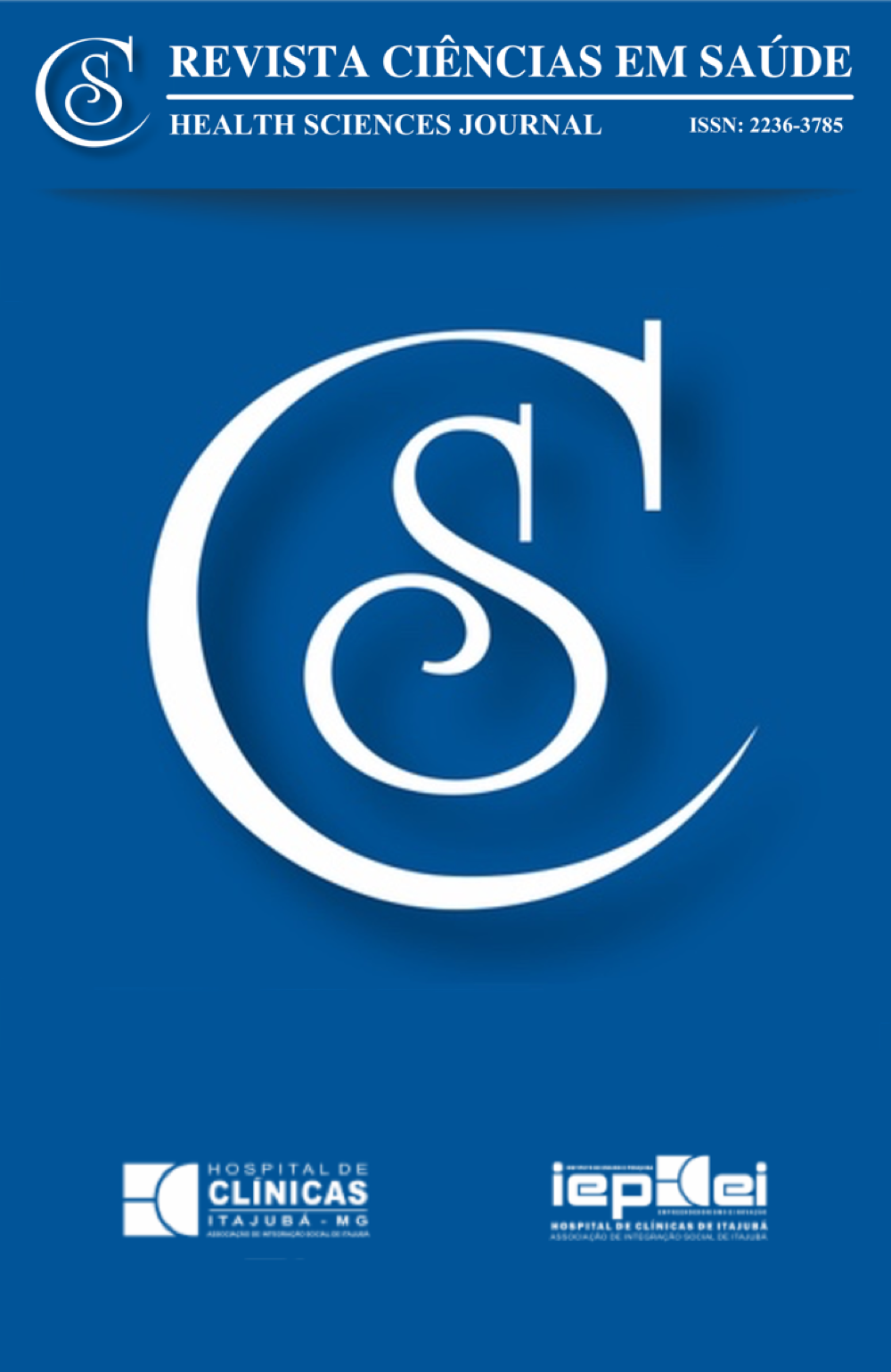Childhood diffuse alopecia caused by Serratia marcences
Main Article Content
Abstract
Childhood alopecia is a rare disease, with an estimated 1% of pediatric dermatological consultations. Skin, eye and tissue infections by Serratia marcescens are rarely reported. We report a case of a female patient, two years and three months old, with painful lesions in the biparietal region of the scalp for two months, with an exulcerated, crusted aspect, associated with serosanguinolent, purulent secretion and with alopecia. She was initially treated with antifungal and empirical, systemic and topical antibiotic therapy, according to the Kerion Celsi hypothesis, without improvement. The isolated growth of the bacterium Serratia marcescens was observed, thus establishing a diagnosis of alopecia by bacterial etiology, and treatment with sulfamethoxazole/trimetropin (30 + 6 mg/Kg/d) was started for ten days, with the resolution of the infectious condition and onset of area repilation of alopecia, leaving only small scarred areas as a sequel.
Article Details
Authors maintain copyright and grant the HSJ the right to first publication. From 2024, the publications wiil be licensed under Attribution 4.0 International 
 , allowing their sharing, recognizing the authorship and initial publication in this journal.
, allowing their sharing, recognizing the authorship and initial publication in this journal.
Authors are authorized to assume additional contracts separately for the non-exclusive distribution of the version of the work published in this journal (e.g., publishing in an institutional repository or as a book chapter), with acknowledgment of authorship and initial publication in this journal.
Authors are encouraged to publish and distribute their work online (e.g., in institutional repositories or on their personal page) at any point after the editorial process.
Also, the AUTHOR is informed and consents that the HSJ can incorporate his article into existing or future scientific databases and indexers, under the conditions defined by the latter at all times, which will involve, at least, the possibility that the holders of these databases can perform the following actions on the article.
References
Cortés GA, Mardones VF, Zemelman DV. Caracterización de las causas de alopecia infantil. Rev Chil Pediatr. 2015; 86(4):264-9. https://doi.org/10.1016/j.rchipe.2015.06.015 PMid:26298298 DOI: https://doi.org/10.1016/j.rchipe.2015.06.015
Alves R, Grimalt R. Hair loss in children. Curr Probl Dermatol. 2015;47:55-66. https://doi.org/10.1159/000369405 PMid:26370644 DOI: https://doi.org/10.1159/000369405
Castelo-Soccio, L. Diagnosis and management of alopecia in children. Pediatr Clin North Am. 2014;61(2):427-42. https://doi.org/10.1016/j.pcl.2013.12.002 PMid:24636654 DOI: https://doi.org/10.1016/j.pcl.2013.12.002
Xu L, Liu KX, Senna MM. A practical approach to the diagnosis and management of hair loss in children and adolescents. Front Med (Lausanne). 2017;4:112. https://doi.org/10.3389/fmed.2017.00112 PMid:28791288 PMCid:PMC5522886 DOI: https://doi.org/10.3389/fmed.2017.00112
Goldberg LJ., Castelo-Soccio LA. Alopecia: Kids are not just little people. Clin Dermatol. 2015;33(6):622-30. https://doi.org/10.1016/j.clindermatol.2015.09.005 PMid:26686014 DOI: https://doi.org/10.1016/j.clindermatol.2015.09.005
Yu VL. Serratia marcescens: Historical perspective and clinical review. N Engl J Med. 1979;300(16):887-93. https://doi.org/10.1056/NEJM197904193001604 PMid:370597 DOI: https://doi.org/10.1056/NEJM197904193001604
Cristina ML, Sartini M, Spagnolo AM. Serratia marcescens Infections in Neonatal Intensive Care Units (NICUs). Int J Environ Res Public Health. 2019;16(4):610. https://doi.org/10.3390/ijerph16040610 PMid:30791509 PMCid:PMC6406414 DOI: https://doi.org/10.3390/ijerph16040610
Anahory B, Santos P, Borges M. Querion do couro cabeludo - A propósito de um caso clínico. Rev Port Med Geral Fam [Internet]. 2013 [cited 2020 Feb 26];29(6):394-7. https://doi.org/10.32385/rpmgf.v29i6.11200 DOI: https://doi.org/10.32385/rpmgf.v29i6.11200
Ferreira SS, Teixeira C, Machado S, Marques L. Kérion celsi: uma complicação rara da Tinea capitis. Nascer Crescer [Internet]. 2017 [cited 2019 Feb 25];26(2):126-8. Available from: www.scielo.mec.pt/scielo.php?script=sci_arttext&pid=S0872-07542017000200008&lng=pt
Mendes GM, Freitas BAC, Oliveira JRL, Cardoso MF, Pacheco EC, Vitória HHM. Kerion celsi: Um relato de caso. Resid Pediatr. 2019;9(1):66-69. https://doi.org/10.25060/residpediatr-2019.v9n1-10 DOI: https://doi.org/10.25060/residpediatr-2019.v9n1-10
Melo-Monteiro C, Martins CJ, Monteiro CS, Paiva MM, Fagundes RO. Kerion Celsi por Microsporum gypseum. An Bras Dermatol. 2003;78(3):319-21. https://doi.org/10.1590/S0365-05962003000300008 DOI: https://doi.org/10.1590/S0365-05962003000300008
Peixoto AB, Novis CFL, Vilela GM, Lerer C. Kerion: a importância da sua diferenciação com infecção bacteriana do couro cabeludo. Relato de caso. Rev Soc Bras Clín Méd. 2012;10(3):243-5.
Karkey A, Joshi N, Chalise S, Joshi S, Shrestha S, Thi Nguyen TN, Dongol S, Basnyat B, Baker S, Boinett CJ. Outbreaks of Serratia marcescens and Serratia rubidaea bacteremia in a central Kathmandu hospital following the 2015 earthquakes. Trans R Soc Trop Med Hyg. 2018;112(10):467-472. https://doi.org/10.1093/trstmh/try077 PMid:30107587 PMCid:PMC6181195 DOI: https://doi.org/10.1093/trstmh/try077
Giraldez, PE, Mayo PP, Losada A. Skin infection due to Serratia marcescens in an immunocompetent patient [Article in Spanish]. Actas Dermosifiliogr. 2011;102(3):236-7. https://doi.org/10.1016/j.ad.2010.07.008 PMid:21345399 DOI: https://doi.org/10.1016/j.ad.2010.07.008
Diranzo JG, Villodre JJ, Zarzuela VS, Castillo LR, Bru AP. Skin Abscess due to Serratia marcescens in an Immunocompetent Patient after Receiving a Tattoo. Case Rep Infec Dis. 2015;2015:626917. https://doi.org/10.1155/2015/626917 PMid:26356072 PMCid:PMC4555453 DOI: https://doi.org/10.1155/2015/626917
Rodrıguez GF, Paz RC, Gonzalez RS. Cutaneous infection caused by Serratia marcescens in a child. J Am Acad Dermatol. 2006;55(2):357-8. https://doi.org/10.1016/j.jaad.2005.08.053 PMid:16844533 DOI: https://doi.org/10.1016/j.jaad.2005.08.053
Park KY, Seo SJ. Cutaneous Serratia marcescens infection in an immunocompetent patient after filler injection. Acta Derm Venereol; 2013;93(2):191-2. https://doi.org/10.2340/00015555-1362 PMid:22513504 DOI: https://doi.org/10.2340/00015555-1362
Rodríguez-Palacios MM, Takahasi-Álvarez V, Vega-Bogado ME. Caracterización clínica y epidemiológica de brote a Serratia marcescens en una Unidad de Cuidado Intensivo Pediátrico Hospital Nacional de Itaugua. Paraguay. Abril a setiembre 2015. Rev Nac (Itauguá). 2016;8(2):19-33. https://doi.org/10.18004/rdn2016.0008.02.019-033 DOI: https://doi.org/10.18004/rdn2016.0008.02.019-033
Pérez Morales L, Valdivia Portales Y, Torres Morel A. Aislamiento de Serratia marcescens en herida quirúrgica. Medisur [Internet]. 2017 [cited 2020 Jul 08];15(4):538-44. Avaiable from: scielo.sld.cu/scielo.php?script=sci_arttext&pid=S1727-897X2017000400013&lng=es
